Information about the early hammer guns of James Woodward is hard to find. The guns themselves do not appear on the market very often and the records from Woodward's early years are scant.
The 16-bore hammer gun featured here is numbered 3064 and it looks very much like a pinfire, with its shallow fences. Woodward's record books don't show any guns made prior to serial number 2000, which may actually have been the number with which he began. The records that are included are often patchy or simply not completed, with no actual details of any gun before number 2,886.
That, however, is dated as 1876, which is not consistent with the features of the gun, which is clearly much earlier. The last entry in the book is dated 1875 and relates to No.3380. In short, Woodward's records are not very helpful.
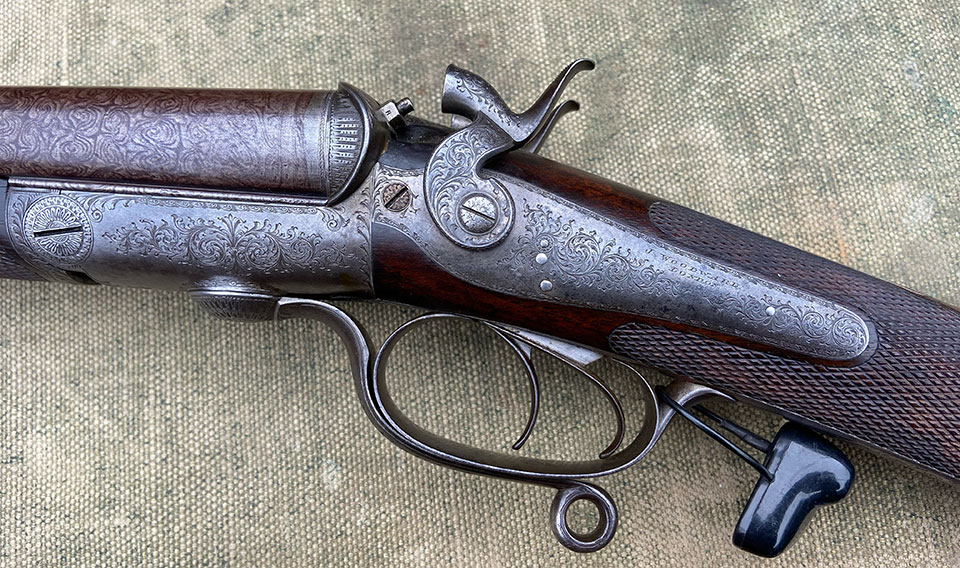
Nigel Brown thought that a pinfire Woodward, No.3182, dated from 1873. The serial number, therefore is not much help in reliably dating this gun. Other indications, like the style and the address, can help in such cases.
The locks are engraved 'J. Woodward. London' and the rib is engraved 'James Woodward. 64 St. James's Street. London'.
An announcemnet in The Field in October 1872 informed readers that the 58-year-old founder had brought his sons into the company on a formal basis and the style was changed to 'James Woodward & Sons'. So, we can deduce that this gun pre-dates 1872.
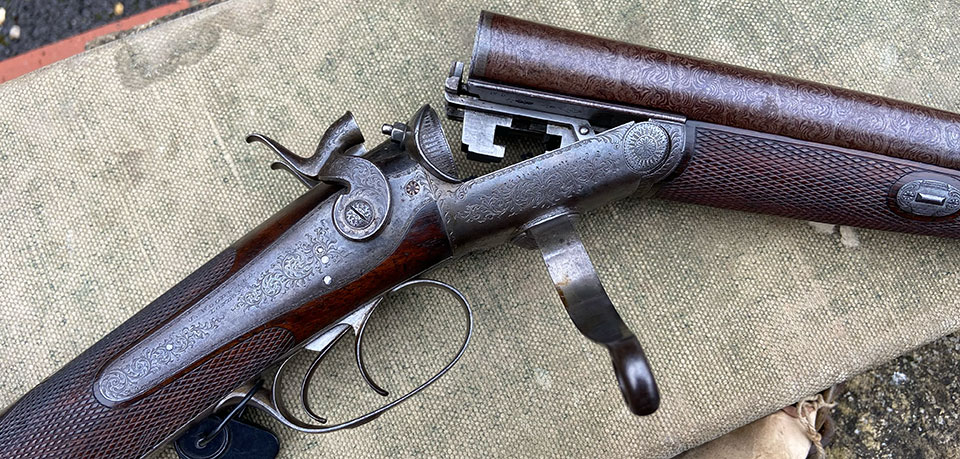
The address is not especially helpful, as Woodward had inherited 64 St.James's Street from his time in partnership with Charles Moore. Teasdale Buckell thought this happened around 1842.
In 1851 'James Woodward' of 64 St James's Street was listed in the catalogue for the Great Exhibition. However, the firm continued to trade as Moore & Woodward until the change occurred, sometime between 1863 and 1868. So, we might put the earliest date this gun could be as 1863, but just as likely 1868; and the latest 1872, based on the information gathered so far.
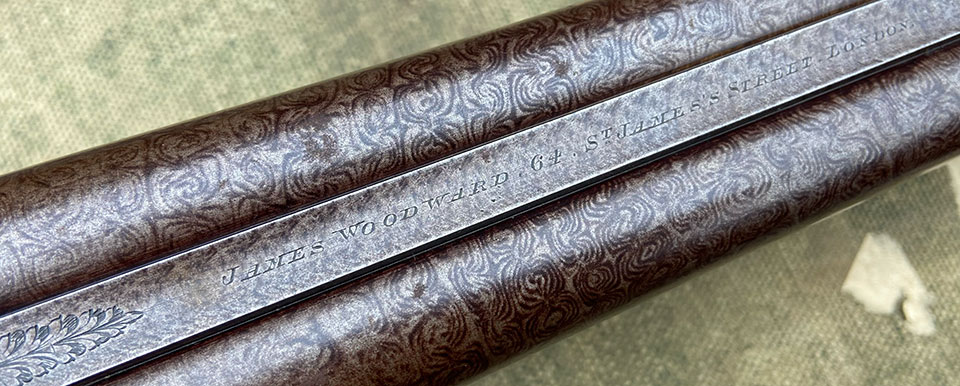
The gun is built on the patent extractor mechanism of Woodward's collaborator John Emme, a maker to the trade with workshops in Soho.
This was given patent No.1460 of 25th May 1866. This, then, helps us bring the earliest date forward at least three years. The operating lever is the Jones rotary under-lever of September 1859, which is of no further help with the date.
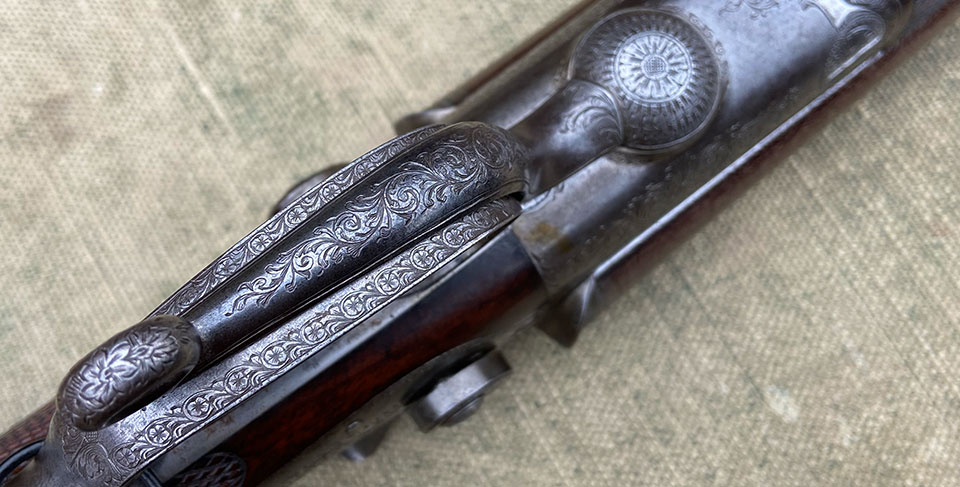
The gun has the look of a pinfire, though it does not appear to be a conversion. Gunmakers in the transition period between the 1852 pinfire and the 1861 centre-fire often made guns which share characteristics of pinfires, with their shallow fences, perhaps making use of barrelled actions already in stock but working the guns up as centre-fires.
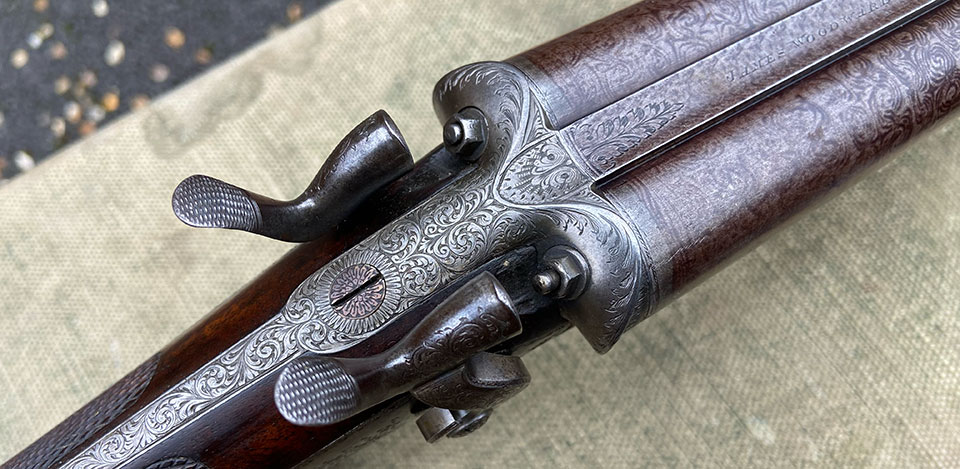
John Emme and James Woodward later collaborated in patenting a design that was a variant of the Hodges treble-grip used by Stephen Grant. This was lodged in 1872 and given patent No.267.
The damascus barrels on this gun look like a two-iron type which is seen more commonly on guns made in the 1860s than the 1870s, again providing a visual indication the the gun is earlier than the serial number suggests. I would date it to the late 1860s. Somewhere between 1867 and 1870, probably built on an earlier barrelled-action intended for a pinfire.
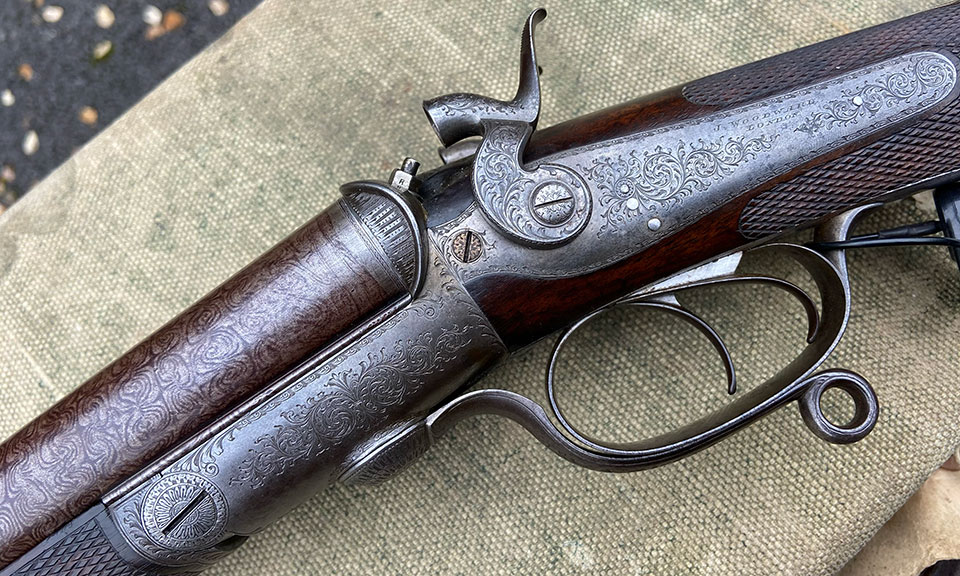
It remains in remarkably good condition for a gun of its age and any maintenance and refurbishment carried out in the past has been done sympathetically. It has 30" barrels and the stock is 14 3/4" long with an ebonite butt-plate 1/2" in depth. It weighs 6lbs 6oz and has no choke in either barrel.
You will look long and hard before you find a centre-fire James Woodward gun pre-dating this one, or nearing its originality and condition.
For Woodward enthusiasts, there is good news and bad news. The good news is that Nichoas Harlow has produced a very informative book on James Woodward. The bad news is that the limited print run of 250 copies sold out within a month, so you can;t buy one!
Published by Vintage Guns Ltd on (modified )




